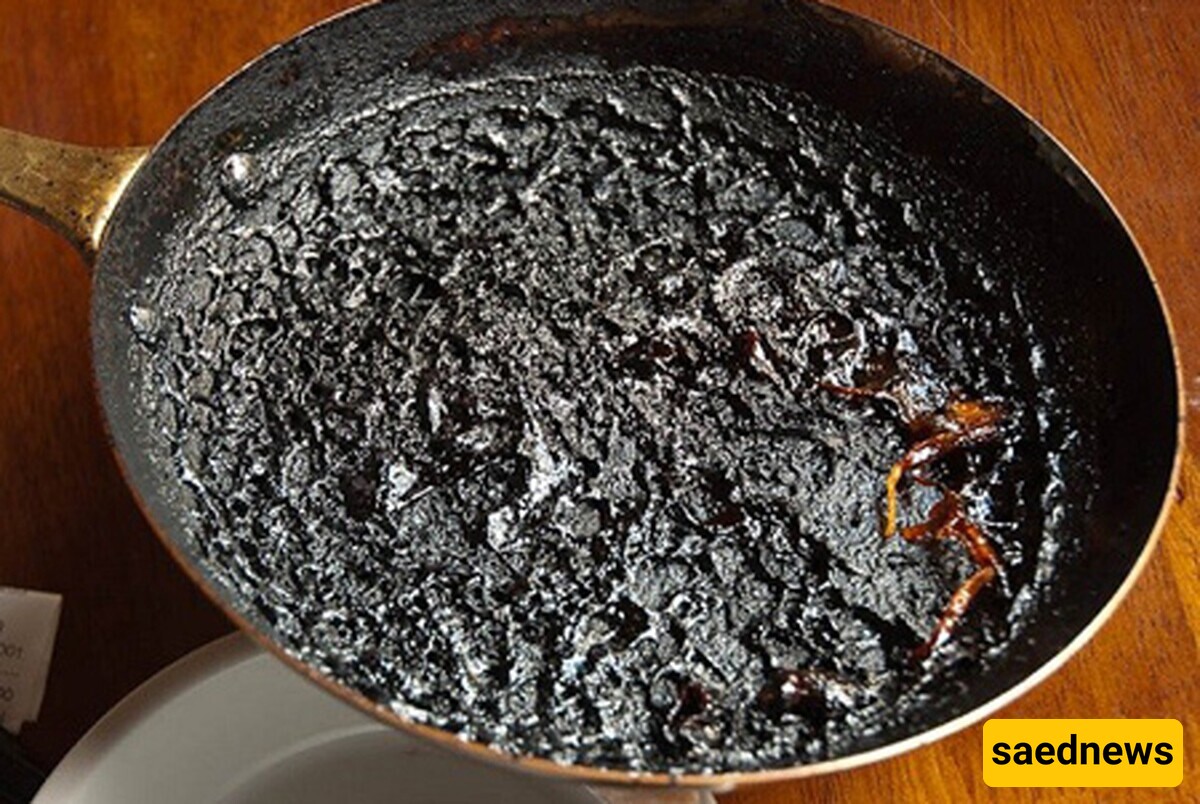Advances in science in recent years have helped people save time in various ways, even when it comes to washing cooking utensils.

According to the family magazine service of Saed News, stainless steel pans are a staple in many homes and restaurants. If you've given up on using stainless steel pans after your last experience with chicken sticking and burning, leaving a mess to clean, you're not alone. But you should know that with the right knowledge and heat management, you can utilize the "Leidenfrost effect" to make stainless steel cookware non-stick. However, even with this method, you won't be able to fry an egg in a cold, oil-free pan on low heat. But, using the Leidenfrost effect, you can move food freely without it sticking to the pan and clean it without scrubbing.
Proper Use of Stainless Steel Pans
Unless you're reheating food, never put food in a cold stainless steel pan. Always preheat the pan before adding ingredients, even oil. Here's why:
Protein Bonding: When protein-rich foods like meat or chicken are placed in a cold pan and heated together, proteins bond with elements in the pan, causing the food to stick. This is similar to how boiling eggs is easier when starting with boiling water rather than cold water.
Microscopic Surface: Stainless steel has a porous surface that expands and smoothens when heated, reducing the likelihood of food sticking. The preheating time depends on the pan's construction and your stove's power. Use the water test to determine the right time to add food.
Water Test for Proper Heating
The right time to add food is when a drop of water in the heated pan skates around like a hockey puck instead of evaporating immediately. This phenomenon, known as the "Leidenfrost effect," occurs when a thin layer of gas between the pan and the water droplet reduces friction. The same principle applies to food, allowing it to glide over the pan's surface. Once the pan is properly heated, remove any water droplets, add cooking oil, and then your ingredients.
Maintaining the Leidenfrost Effect
The Leidenfrost effect requires high and stable temperatures. Therefore, never add food directly from the fridge or freezer to the pan. Cold food lowers the pan's surface temperature, causing it to bond with the stainless steel and negating the preheating process. Room-temperature food, however, releases moisture quickly, creating the sizzle that helps separate the food from the pan.
Adding food at room temperature also minimizes thermal shock, which can warp the pan and cause hot oil to splatter dangerously.
Should I Season My Stainless Steel Pan?
Unlike cast iron and carbon steel pans, stainless steel pans do not require seasoning. Seasoning involves creating a polymerized oil layer to make pans non-stick, but this is unnecessary for stainless steel. You can even safely clean stainless steel pans in the dishwasher.
With these tips, you can enjoy cooking with stainless steel pans without the hassle of sticking or burning food.


